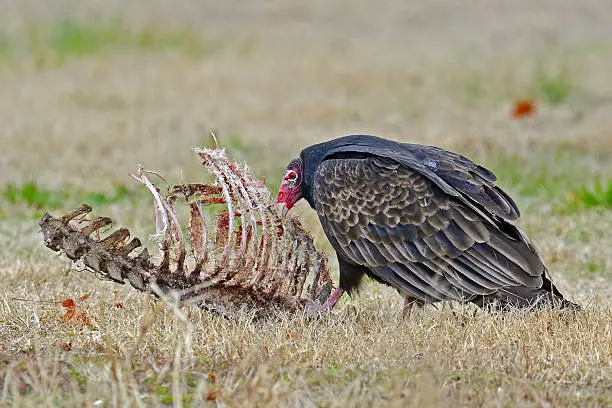
“Be Careful What You Eat” Does Not Apply to These Birds
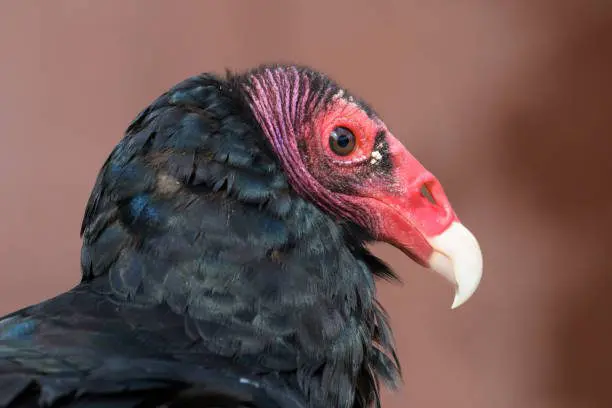
It is not unkind to say that Turkey Vultures are unattractive birds. It is simply a fact. When sitting on the ground, their appearance is akin to that of a wild turkey. They are large birds, sporting a wingspan of 6′ and a head-to-tail-tip length of up to 3′. Though menacing, they are not a threat to humans. They rarely attack moving animals, preferring instead to eat carrion (dead animals).
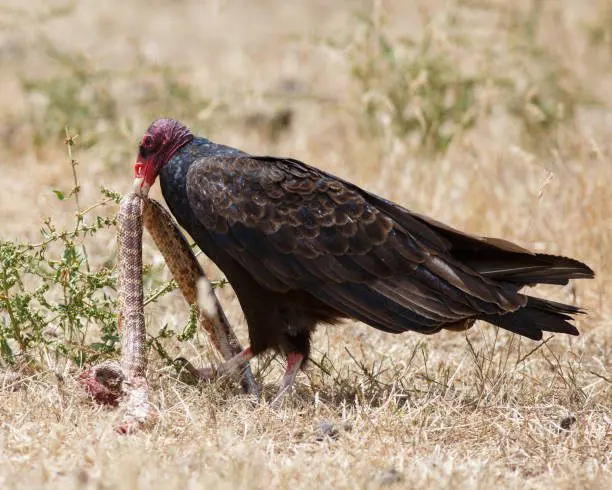
And, when it comes to dead animals, they are not picky eaters. You will find them dining on the carcass of a week-dead, maggot-filled, stench-enveloped, roadside deer kill. They have an intense ability to smell carrion and keen eyes to help them hone into a smelly target. The part of its brain responsible for processing smells is particularly large, compared to other birds. Its heightened ability to detect odors—it can detect just a few parts per trillion—allows it to find dead animals below a forest canopy. Turkey Vultures use the rising air currents, called thermals, to soar into the sky, coasting in lazy circles as they search for food. (The Cleveland Museum of Natural History has produced a brilliant five-minute video for those of you seeking extra credit on this assignment.) I highly recommend this video.
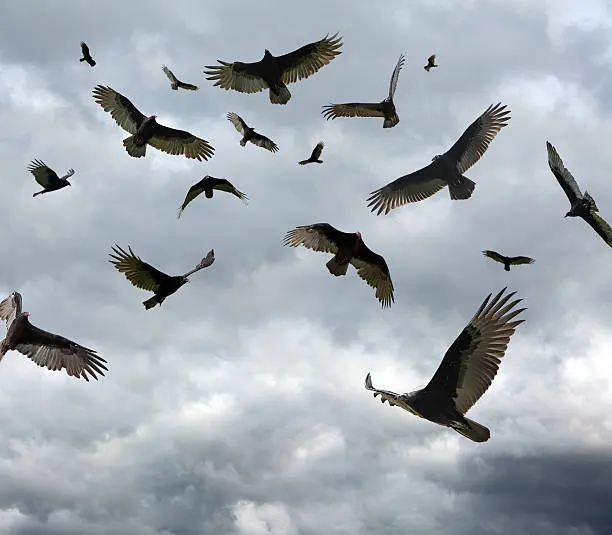
They do also consume vegetation for almost 50% of their diet. The stomach of a Turkey Vulture is able to digest practically anything except plastic and is able to encounter and kill any virus or bacteria, which is a neat trick.
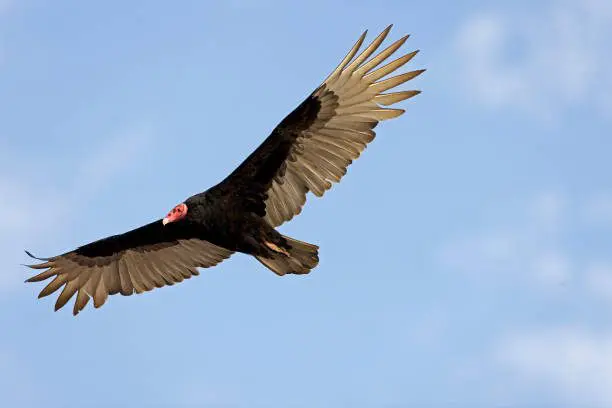
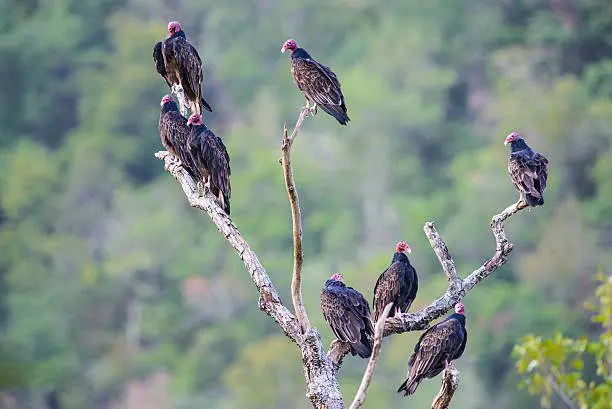
These birds are not particularly afraid of humans, mostly choosing to ignore them. They can be found roosting in trees and on fence lines in the early morning. When the sun rises and begins to create thermal energy which spawns rising currents of air, they hop on board, gently flapping their wings and climbing until they reach an appropriate observation point from which to commence their daily feast of rotting flesh. They prefer fresh meat, but hey, when your hungry any meat will apparently do.
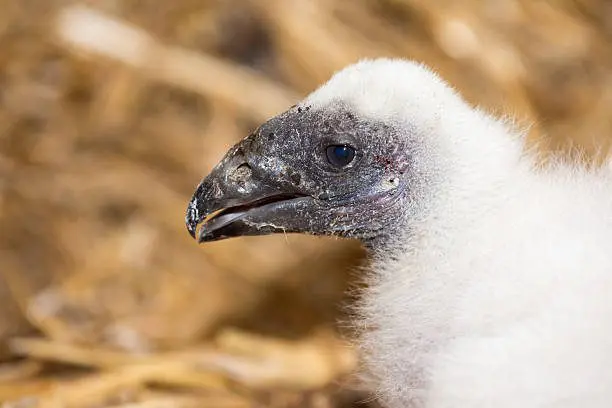
Part of the duty of a Turkey Vulture is of course, to make little Turkey Vultures. They are rather shy when it comes to their sexual interactions and tend to conduct their relations in private, avoiding urban and suburban areas. They do not build nests, preferring instead undisturbed areas in the countryside as a place to lay their eggs. An abandoned building, a vacant cave, a grassy burrow will do. The egg crop dropped is typically two, and for the following five weeks after the egg drop, they tend to share the responsibility to incubate. After hatching, it can be another 60 to 80 days before they fledge (take their first flight). The fledglings will stick around Mom and Dad’s house for a few weeks and then literally fly the nest and explore the world on their own. Turkey Vulture couples are monogamous creatures staying together until death do they part. Once they find an area they like, they tend to stay there year-round, or if they do migrate in the winter, they tend to return back to their favorite spot.
I’ll leave you with a few of exciting tidbits about Turkey Vultures (courtesy of All About Birds):
- As a defense mechanism, Turkey Vultures may vomit on a bird, animal, or human that gets too close. Considering what they eat, this can be a powerful weapon.
- When it’s hot outside, Turkey Vultures will defecate on their feet to cool off.
- The Turkey Vulture’s stomach acid is extremely acidic, so Turkey Vultures can digest just about anything. This also allows them to eat carcasses tainted with anthrax, tuberculosis, and rabies without getting sick. By taking care of the carrion, vultures provide an essential service for the health of our ecosystems. Without them, carcasses would accumulate, and diseases would spread from rotting flesh.
- The oldest recorded Turkey Vulture was at least 23 years, 4 months old when it was seen in California in 2019, the same state where it was banded in 1997.

Welcome to 3-Minutes A Day University, where every day you can learn a little about a lot of things in three minutes or less. We help you expand your knowledge and understanding of the real world, and 3-MAD University is tuition-free. Our wide-ranging syllabus includes a fascinating insight into topics including Health and Medicine, Science, Sports, Geography, History, Culinary Arts, Finance and the Economy, Music and Entertainment, and dozens more. You will impress yourself, your friends, and your family with how easy it is to learn facts and perspectives about the world around you. One topic you will never find covered is politics. We hope you enjoyed the previous three minutes. If you liked this post, please pass it along to a friend.
Was this email forwarded to you? Subscribe Here.
© Copyright 2024. 3-Minutes A Day University All Rights Reserved. Unsubscribe


Mark
Great topic for me and good to educate others about this maligned but necessary raptor.
176057401
Thank you, Mark
Mary Ann Lussier
Interesting array of topics addressed in this blog. Thank you for sharing.
176057401
Thank you for being a loyal reader!